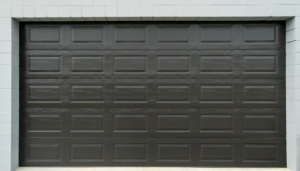Looking to improve your store’s setup? Discover smart retail solutions that enhance customer experience and make shopping smooth and enjoyable.
Running a store isn’t easy. You want customers to feel welcome, find what they need, and leave happy.
But with so much to think about—inventory, layout, checkout, and customer service—it can get overwhelming.
The good news? Simple retail solutions can make a big difference.
By improving how your store is set up and how customers interact with your products, you can increase sales and keep people coming back.
Why Store Setup Matters
Think about the last time you walked into a store. If things were messy, shelves were empty, or checkout took forever, chances are you were left frustrated.
But if everything was easy to find, the store was well-organized, and checkout was smooth, you probably had a much better experience.
Here are some key ways to improve your store’s setup:
- Make navigation easy: Keep aisles clear, place signs where they’re easy to see, and arrange products in a way that makes sense.
- Optimize checkout: Long lines turn customers away. Use multiple payment options and self-checkout stations to speed things up.
- Enhance the atmosphere: Lighting, music, and even scent can influence a shopper’s mood. A comfortable environment encourages them to stay longer.
- Stock smartly: Keep bestsellers at eye level, restock items regularly, and rotate products to keep things fresh.
- Use digital price tags: These help in updating prices quickly and reduce confusion.
- Arrange high-demand products near checkout: This boosts impulse purchases.
If you sell home essentials, especially bathroom accessories in Malaysia, displaying them in a way that makes them easy to test and compare can boost sales.
How Technology Improves Retail
Retail has come a long way. Technology now has a huge impact on how stores operate. If you’re not using tech to improve efficiency, you might be falling behind.
Here’s how it can help:
- Smart inventory management: No more guessing if an item is in stock. Digital tracking systems let you know exactly what’s available.
- Mobile payments: Customers love convenience. Accepting contactless and mobile payments makes checkout faster.
- Customer data insights: Understanding buying habits helps you stock better and run personalized promotions.
- Self-service options: Some shoppers prefer to browse and pay without help. Kiosks and self-checkout systems make this possible.
- AI-driven recommendations: Personalized suggestions based on previous shopping habits can increase sales.
- Augmented reality (AR): Customers can visualize products before purchase.
- Automated checkout: This eliminates the need for manual scanning and speeds up the process.
Even small changes, like adding QR codes for product details, can make shopping easier for customers and free up your staff for more important tasks.
How Staff Training Helps Customer Satisfaction

Technology and store setup are important, but nothing beats great customer service. Your employees are the face of your business.
When they’re helpful and knowledgeable, people will trust your store more.
Here’s how to train staff for better service:
- Teach product knowledge: Employees should know what they’re selling and be able to answer common questions.
- Encourage friendliness: A warm greeting and a smile make a big difference in how customers feel.
- Improve problem-solving skills: When issues come up, staff should know how to handle them calmly and efficiently.
- Train on checkout speed: A slow register can frustrate customers. Training staff to work efficiently will keep lines moving.
- Implement role-playing exercises: Practicing customer interactions can boost confidence.
- Offer continuous training: Keeping staff updated on new trends and technology is crucial.
- Reward excellent service: Incentives and recognition programs encourage employees to do their best.
Good service creates loyal customers. Even if a shopper finds the same item somewhere else, they’ll return to your store if they know they’ll get great service.
How to Create an Engaging Shopping Experience
A great store isn’t just about selling—it’s about the experience. People enjoy shopping in places where they feel comfortable and inspired.
Here are some ideas to make shopping more engaging:
- Seasonal displays: Change up your store’s look with the seasons to keep things fresh.
- Interactive product demos: Let customers see and try products before they buy.
- Special promotions: Limited-time deals and loyalty rewards encourage repeat visits.
- Personalized shopping: Some stores offer personal shopping assistants or appointment-based shopping for a more exclusive feel.
- Live events and workshops: Hosting product demonstrations or DIY sessions can attract more customers.
- Loyalty programs: Rewarding repeat customers increases retention.
- In-store entertainment: Music, screens or even small seating areas can enhance the experience.
The key is to make customers enjoy their time in your store so they don’t just buy one thing and leave but come back again and again.
The Role of Data in Retail Improvement
Retail isn’t just about stocking shelves and hoping customers buy. Smart businesses use data to make better decisions.
Each part plays a crucial role in how customers shop and what keeps them coming back.
Each part plays a crucial role in tracking customer habits, sales patterns, and stock levels.
Here’s how data helps:
- Know what sells best: You can see which products are most popular and stock up on them.
- Improve pricing strategies: Discounts and promotions can be based on real customer demand.
- Reduce waste: If certain items aren’t selling, you’ll know to adjust your stock.
- Understand peak shopping times: You can schedule more staff when you know the store is busiest.
- Monitor customer foot traffic: This helps in optimizing store layout.
- Identify trends: Predicting future sales patterns ensures you stay ahead of competitors.
- Measure marketing effectiveness: Tracking responses to promotions helps refine advertising efforts.
Data doesn’t just help big stores. Even small shops can use sales reports and feedback to improve business.
Final Thoughts

Making retail better doesn’t have to be complicated. Small changes in store layout, customer service, and technology can lead to big improvements in customer experience and sales.
Whether you sell clothing, electronics, or bathroom accessories in Malaysia, keeping things organized, using smart technology, and training your staff well can turn a good store into a great one.
If you’re looking for ways to boost your retail business, start by focusing on the shopping experience.
Happy customers mean better sales—and a better business overall.
With the right mix of smart solutions, customer-friendly policies, and engaging experiences, your store can become a go-to destination rather than just another stop along the way.







+ There are no comments
Add yours